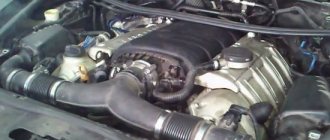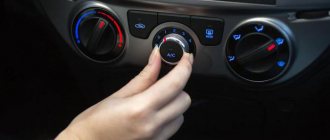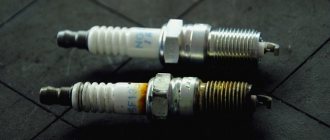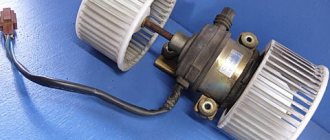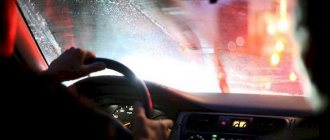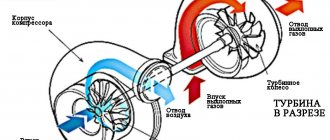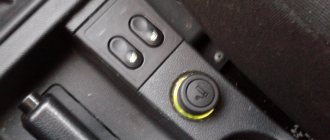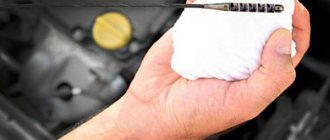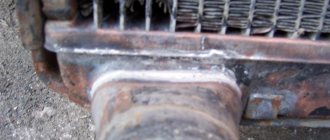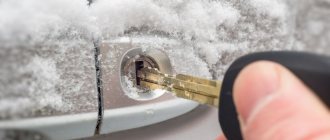The characteristic wheezing of speakers in a car is a fairly common problem that can be easily eliminated if you understand where to look for the cause. For this it is necessary,
- first, “calculate” exactly which (which) of all the speakers in the cabin are working with distortion.
- Secondly, determine at what volume the wheezing appears - at maximum, increased or any volume.
- Thirdly, based on these factors, look for the cause in the places described below.
How to identify wheezing car speakers
Sound distortion in the form of unpleasant wheezing can appear both in all speakers in the cabin, and in just one of them. At the first stage of troubleshooting, it is extremely important to establish this. There are several ways to do this. Let's look at the two most understandable and simple ones.
The first method is to mute the speakers one by one using the car radio settings menu. Even in cheap Chinese options, this feature is usually provided. It is implemented in the form of balance and fader adjustment. Referred to as the BAL and FAD settings, respectively.
Balance is an adjustment of the car radio that allows you to distribute the power of the amplifier built into it between all the right and left speakers. That is, if you twist (press) BAL in one direction or the other, you can completely muffle all the sound from one side of the cabin. For example, if you turned the balance completely to the right or left, and the wheezing of the speakers disappeared, then it now becomes clear whether it is on the left or right relative to the interior.
However, this is still not enough. With the help of balance, you can only determine the side of the speaker that is causing distortion. However, on the one hand there are at least two of them. To figure out whether the front or rear is wheezing, adjusting the fader (FAD) can help. This adjustment redistributes the car radio's output power between the front and rear speakers.
Example. Let's say that after adjusting the balance, it turned out that the wheezing disappeared when all the power was shifted to the right side. In this case, you now need to reconfigure the balance completely to the left. The wheezing will return. Next, using the fader settings, you need to alternately direct all the power to the front left and rear left speakers.
After playing with just these car radio settings, you will definitely figure out the speaker that is wheezing. But only if there are only four of them in the cabin. If there are two or more speakers on any of the four channels, this complicates the situation. And you can get out of it by using the second diagnostic method.
It consists in alternately physically disconnecting the dynamic heads from the signal wires. In this case, you will have to disconnect not from the car radio, but directly from the speakers themselves. The task is to find a speaker, after which, when turned off, the wheezing will disappear. This method, by the way, will help if the radio does not have the settings described above (as a rule, balance adjustment is available on all models, but FAD is not always available).
The next step is to understand at what volume level a wheezing speaker wheezes. Distortion can occur both at maximum volume and at minimum volume. In the process of calculating a faulty speaker, it is very desirable to establish this point. This will be useful for further diagnosis.
Causes and signs of sound distortion
Timing faults: signs, causes and solutions
So, why does hissing appear and how to deal with it? If the problem appears immediately after installing new speakers, this indicates that the power of the radio amplifier is greater than that of the speakers. The average power level of a car radio is about 45-55 W.
Troubleshooting first comes down to correctly understanding what the problem is:
- noise appears only in one speaker;
- wheezing is observed in all speakers;
- the problem appeared suddenly;
- the noise was quiet at first, but over time it began to increase;
- wheezing is heard only at minimum volume;
- The car speakers wheeze at the highest volume.
Acoustics Pioneer for car
As practice shows, speakers usually wheeze when listening to audio at full volume. This is usually due to dust and moisture getting on the speaker. But let's look at all the defects in order.
One speaker
If the problem appears with only one speaker, then the problem may lie either in it, or in the radio itself, or in the connected wiring. The amplification device consists of several independent amplifiers, so the problem can really only affect one element. Diagnostics in this case comes down to connecting a speaker that is known to work instead of the one that hisses. If the defect remains, then the cause should be sought either in the wiring or in the audio system itself.
It happens that damage occurs during the installation of wiring or an audio system on a car. Minor damage can cause corrosion and loss of contact. Accordingly, this leads to distortions in the future. If the cause of the defect lies in the column itself, then you just need to replace it with a new one.
Car speaker disassembly
All at once
If the defect appears on all elements of the audio system at once, then it is unlikely that you will need to repair all the speakers at once, but this is quite possible. In particular, if the driver listens to loud music at high power for a long time. This can cause the coils to overheat, causing them to simply fall off the frame. If the malfunction manifests itself abruptly, then repairing the speakers is unlikely to help, since the reason in this case usually lies in the car radio or amplifier itself.
When buying an audio system for your car, you need to be careful not to purchase a low-quality installation
When purchasing, be sure to pay attention to the body of the speakers themselves - they are marked with maximum power, which can be maintained for a short time. As a rule, this figure is 300-350 W
In fact, the real power will be significantly less than the power of the amplifier in the radio.
At the same time, this defect may appear on all elements as a result of insufficient voltage level in the on-board network. It is possible to identify such a problem. If, when the volume is increased, the radio display starts to go dark or blink, this indicates a voltage problem. As an option, you can diagnose the wiring contacts (the author of the video is AVTO CLASS).
Distortion appears at minimum volume
Speaker repair may also be required if distortion occurs at minimum volume.
Before repairing, you need to pay attention to diagnosing the wiring that goes from the terminals to the coil itself. In practice, flexible wires often break off at the soldering point
It is quite possible to determine the defect yourself - usually when you touch the wires, the hissing disappears.
Do-it-yourself speaker repair in this case comes down to removing the broken part and soldering. You can also try to solve the problem by soldering the wiring to the high-frequency speakers from below. In this case, it will be possible to connect the wiring so that it does not move, but the only drawback will be that it will be visible.
Distortion at maximum volume
There may be several reasons for distortion at high volumes:
- audio systems;
- ;
- acoustics.
You can try to repair the speaker if it is the only one wheezing. If distortion occurs in all speakers, this may be due to exposure to moisture, as a result of which the diffuser may break and the suspension will lose its elasticity, in particular if this element is made of paper. In addition, dust that gets under the coil through the cap can cause a problem. And, of course, a repaired speaker will never play normally if there are voltage problems in the network. In addition, one should take into account such a nuance as the old age of the speaker system.
Loading …
Wheezing at minimum or maximum volume
Start testing at low volume. If wheezing appears, then the problem lies in the connection of the wires to the speakers. Most likely they are coming off or damaged. To do this, you will have to disassemble the equipment and look at the internal components.
If everything works well, keep raising the volume. When wheezing occurs at high volume, the following types of problems are possible:
- Large particles of dust or dirt may cause vibrations and distortion of the sound.
- Water inside the speaker casing causes wiring and microcircuits to come loose, which also contributes to hissing.
- Problems with the capacitor not properly outputting the amplitudes of the sound waves.
IMPORTANT: Before starting repairs, make sure that the problem is in the column and not in the receiver.
Causes and signs of sound distortion
So, why does hissing appear in car speakers and how to deal with it? If the problem appears immediately after installing new speakers, this indicates that the power of the radio amplifier is greater than that of the speakers. The average power level of a car radio is about 45-55 W.
Troubleshooting first comes down to correctly understanding what the problem is:
- noise appears only in one speaker;
- wheezing is observed in all speakers;
- the problem appeared suddenly;
- the noise was quiet at first, but over time it began to increase;
- wheezing is heard only at minimum volume;
- The car speakers wheeze at the highest volume.
As practice shows, speakers usually wheeze when listening to audio at full volume. This is usually due to dust and moisture getting on the speaker. But let's look at all the defects in order.
One speaker
If the problem appears with only one speaker, then the problem may lie either in it, or in the radio itself, or in the connected wiring. The amplification device consists of several independent amplifiers, so the problem can really only affect one element. Diagnostics in this case comes down to connecting a speaker that is known to work instead of the one that hisses. If the defect remains, then the cause should be sought either in the wiring or in the audio system itself.
It happens that damage occurs during the installation of wiring or an audio system on a car. Minor damage can cause corrosion and loss of contact. Accordingly, this leads to distortions in the future. If the cause of the defect lies in the column itself, then you just need to replace it with a new one.
All at once
If the defect appears on all elements of the audio system at once, then it is unlikely that you will need to repair all the speakers at once, but this is quite possible. In particular, if the driver listens to loud music at high power for a long time. This can cause the coils to overheat, causing them to simply fall off the frame. If the malfunction manifests itself abruptly, then repairing the speakers is unlikely to help, since the reason in this case usually lies in the car radio or amplifier itself.
When buying an audio system for your car, you need to be careful not to purchase a low-quality installation
When purchasing, be sure to pay attention to the body of the speakers themselves - they are marked with maximum power, which can be maintained for a short time. As a rule, this figure is 300-350 W
In fact, the real power will be significantly less than the power of the amplifier in the radio.
At the same time, this defect may appear on all elements as a result of insufficient voltage level in the on-board network. It is possible to identify such a problem. If, when the volume is increased, the radio display starts to go dark or blink, this indicates a voltage problem. As an option, you can diagnose the wiring contacts (the author of the video is AVTO CLASS).
Distortion appears at minimum volume
Speaker repair may also be required if distortion occurs at minimum volume.
Before you repair a car speaker, you need to pay attention to diagnosing the wiring that goes from the terminals to the coil itself. In practice, flexible wires often break off at the soldering point
It is quite possible to determine the defect yourself - usually when you touch the wires, the hissing disappears.
Do-it-yourself speaker repair in this case comes down to removing the broken part and soldering. You can also try to solve the problem by soldering the wiring to the high-frequency speakers from below. In this case, it will be possible to connect the wiring so that it does not move, but the only drawback will be that it will be visible.
Distortion at maximum volume
There may be several reasons for distortion at high volumes:
You can try to repair the speaker if it is the only one wheezing. If distortion occurs in all speakers, this may be due to exposure to moisture, as a result of which the diffuser may break and the suspension will lose its elasticity, in particular if this element is made of paper. In addition, dust that gets under the coil through the cap can cause a problem. And, of course, a repaired speaker will never play normally if there are voltage problems in the network. In addition, one should take into account such a nuance as the old age of the speaker system.
